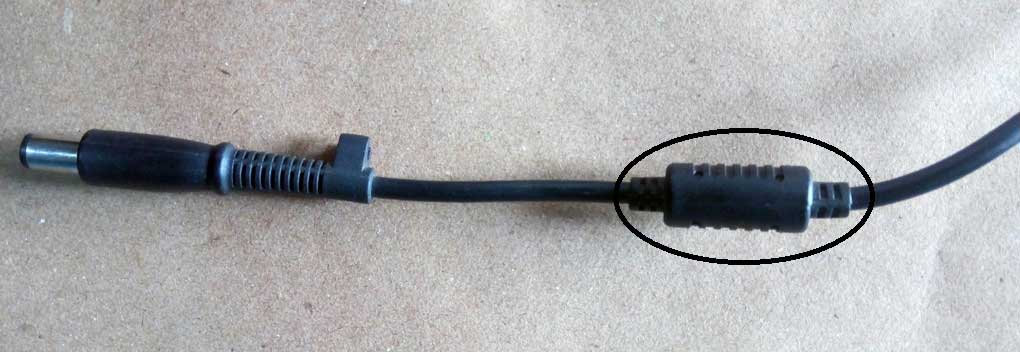In almost every typical computer cables, laptop charger, some USB cables, VGA, scanner and printers cables, you will notice a cylindrical bump close to the end of these cables, this is called Ferrite Bead. It is sometimes also called Ferrite Choke.

What is a Ferrite Bead?
Ferrite beads are made up of a semi-magnetic substance from iron oxide (Iron Rust) alloyed (or joined) with other metals. They are designed for the sole purpose of reducing interference, the electromagnetic and radio frequency interference(RFI).

Electromagnetic interference (EMI) is what makes f.m radio signals unclear producing a high pitched/distorted sound when you place your mobile phone too close to the radio set. This is a reason why cell phones are not allowed on airplanes. Some other electronic devices also produce this kind of interference which is why cables connecting to them have ferrite beads on them.
You may also be like: How to make you laptop battery last longer
Why it is Necessary?
Computers and many other electronic devices are very noisy, they produce a lot of interference. This is because the operate at a very high frequency (RFI). Cables connected to these devices will, therefore, act as an antenna to transmit this interference to other devices. This could cause your monitor to flicker a little bit. It might make your speakers buzz, or, in very extreme cases, it could cause havoc inside of your computer, and this is where the ferrite bead comes in to limit the interference. The ferrite beads are also useful in suppressing electromagnetic interference (EMI) produced together with alternating electric currents used by our electronic devices.
To put simply, the ferrite bead can be referred to as a kind of filter that cancels out any unwanted noise or interference that may be generated from a charger adapter or any other device. This interference if allowed may affect the functionality of the attaching device.
The ferrite bead is positioned at the ends of cables because their job is to make noise/interference from a certain device and turn it into heat. And closer positioning to the source stops the cable from turning into a receiver early on, giving the lumps/bead a purpose.
